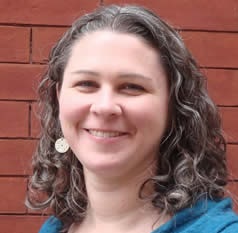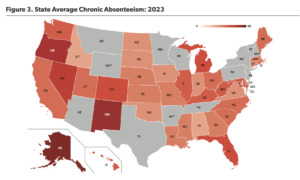 RAWPIXEL.COM/SHUTTERSTOCK
RAWPIXEL.COM/SHUTTERSTOCK
How different would today look if people most affected by decisions held equal power in making those decisions?
- If public health decision-makers included Black, Indigenous and Latinx patients who are disproportionately affected by COVID-19 and suffer the effects of racially biased health care?
- If police accountability review boards, prosecutor’s offices and elected city leaders had actual power over law enforcement activities and included the Black, Indigenous and transgender people most affected by overpolicing, police violence and the prison industrial complex?
- If economic policy was set in partnership with hourly, tipped, domestic and essential workers who drive so much of the economy?
- If students, especially Black and Indigenous students and students with differing ranges of intellectual and physical abilities, partnered in education policy and planning?
The vision arising from these questions pushes past those in power today “reaching out” to engage the community. Rather, the vision upends traditional decision-making structures and positions everyone who will be impacted by a decision as equal partners in power, accountability and value. Most organizations within the youth justice community fall well short of this vision and perpetuate the oppression of youth and families tied to the system through their own or others’ harm.
Everyday oppression of young people
Adultism, a common term for silencing youth voices and experiences, intersects with oppression of girls and young women, young people of color, differently abled young people and LGBTQ young people. Distinct from the responsibility adults have to coach and support young people and share accountability with youth, adultism values the knowledge, wants and needs of adults to the exclusion of those of youth. A common example of how adultism shows up within the youth justice system could be judges or case workers deciding what is best for a young person without consulting that youth.

Laura Furr
Adultism differs from other forms of oppression in the shift every person experiences over a lifetime from a position of oppression to one of privilege. Adults perpetuate the oppression they experienced as children on each new generation. Oppressors rarely recognize their oppression for what it is; human brains are well equipped to cloak and justify our oppression of others. The universality of adultism further keeps many people from recognizing it as oppression. This lack of recognition makes it no less harmful to children and youth.
Within the youth justice field, we must do better.
Youth-adult partnership as an anti-oppression tool
Youth-adult partnership takes a variety of forms but is fundamentally a decision-making structure where youth and adults come to the table together, identify an issue or question together and apply their unique skills, knowledge and assets to solving it together. Everyone shares power, accountability, resources to support their participation and a common language. Both youth and adults within the youth justice community need increased support to make this happen.
Youth-adult partnership can occur between individuals or in larger, more formal decision-making bodies. For example, a case worker and youth who’s been causing frequent “disruptions” could partner to identify the root cause of why the youth remains unengaged and can co-develop an agreement for moving forward constructively. Alternatively, youth-adult partnership can exist in boards of directors or advisory groups with youth and adult members.
A state-level policy reform campaign provides one example of the challenges and benefits of youth-adult partnership. A collaborative group of advocates worked together to craft recommendations for a state law reform and respond to bills as they were introduced by legislators. Adults had to be flexible, meeting late in the day to accommodate youth schedules, transporting youth to meetings and hearings and adjusting timelines to allow for education and preparation of youth on legislation and testimony. The collaborative saw very tangible benefits from this partnership when youth, equipped to fully understand bills and apply their real-life experience, called out a problematic unintended consequence of a proposed change.
Key steps to build youth-adult partnership
Regardless of the mode, adults need training and support to share power, everyone must work together to build shared accountability and shared language, and supportive resources for youth partners may need to go beyond stipends and pizza. Investment that supports these steps will increase the ability of those most affected to share power and reduce oppression.
Adults who make decisions affecting youth hold the keys to decision-making spaces and can do better to partner with youth, but often receive no training, support or resources to do so. Researchers, facing the question of why youth-adult partnership isn’t more widespread despite ample evidence it produces multiple positive outcomes, determined that adults lacked necessary support, time, training and other resources to make it happen.
Organizations planning for youth-adult partnership should include a plan to ensure equitable access through shared resources for youth. A helpful guide here can be the resources adults need, and often take for granted, to succeed at decision-making tables.
When planning supports for youth, consider supports adults have such as:
- the job allowing them to meet their needs and those of loved ones,
- training and experience sitting in and speaking up in mostly white, mostly adult spaces,
- implicit confidence, both their own and others’, that they know what they’re doing,
- capacity to pay to ensure those they love who need care while they sit in a meeting have that care,
- biases of those around them that keep them safe.
Youth-adult partnership supports youth to meet their own needs just as adults do. This intentional focus can be most important and most challenging when the youth who most need to be engaged have the highest level of need.
Recommendations for action
Youth-adult partnership governing decisions that affect young people reinforces their right to self-determination, increases power over their own lives and upends the pervasive privilege-oppressor relationship among adults and youth. Nonprofit and advocacy organizations, juvenile justice and child welfare agencies and law enforcement and education institutions that seek to reduce oppression should invest in a sustainable infrastructure for youth-adult partnership. Philanthropy and government have a role supporting that investment.
Recognizing the nonprofit industrial complex and the maintenance of white supremacy in the nonprofit and advocate communities has pushed some progress toward anti-oppression work in many organizations.
However, especially as it relates to the oppression of young people, much more work remains. Even among “youth-led” organizations, adultism reigns in boardrooms and day-to-day governance decisions. And tokenism continues in many advocacy organizations engaging youth in legislative testimony and other actions.
Direct service, policy and advocacy organizations focused on youth should incorporate adultism in their anti-oppression plans and consider instituting youth-adult partnership in boards or other governance entities, programming and service decisions and policy development.
Oppression takes away people’s power, including the power of self-determination, and relies on the unjust use of power to control another person or group. The various government systems with direct control over the lives of children and youth — the child welfare and juvenile justice systems especially — routinely and completely strip youth, especially Black and Indigenous youth, of their power. Adults in these systems ignore or defy the self-determination of youth, especially LGBTQ youth and youth with ranging levels of intellectual and developmental ability. And it’s the rare system actor that asks any youth what they need or want.
Policy development, performance oversight and individual case decisions in the juvenile justice and child welfare systems should always engage youth as equal partners with adults. Youth leaders affected by both systems have repeatedly proved their extraordinary capacity for engaging in change. It’s past time adults step up to meet them as partners.
Call to action for law enforcement, education leaders
The entrenchment of law enforcement in schools, including through school resource officers, exclusionary discipline policies and searches or metal detectors at doors, goes so far as to criminalize the self-determination of students. Push-out practices entirely remove youth who “make waves” or are “too challenging” for teachers and principals.
Youth leaders have made their needs clear, but seemingly have not yet been heard by adults in power. Government officials at the local and state levels, including education and law enforcement leaders, must build youth-adult partnership into public and charter school boards, police accountability efforts “with teeth,” and within individual school leadership structures to achieve safety, youth development and academic outcomes.
The investments required to facilitate authentic youth-adult partnership are not light, but they are worth it. Taking a moment to envision how different the multitude of crises we face today would look begins to make the case. The stronger decisions, improved outcomes and progress toward anti-oppression should push us all to make the commitment to prioritize our investments, time, training and intention toward youth-adult partnership in all spaces where decisions affect young people.
Laura Furr guides, trains and supports organizations to build and sustain youth-adult partnerships. Her business builds on more than a decade of experience applying youth-adult partnership to youth justice reform and policy, as well as local governance.































